Antony checks out the new WaveCel technology from Bontrager, as fitted into its Bontrager Blaze helmet.
Recently, mountain biking has seen a big increase in the awareness of the long-term risks of concussion. The vast majority of mountain bike helmets use expanded polystyrene (EPS) to provide head protection, and the consensus seems to be that conventional EPS bike helmets are pretty good at stopping flesh wounds and fractured skulls (particularly at the low-ish average speeds that mountain biking crashes tend to occur at). But it’s becoming more apparent that even if there’s no visible damage to the outside of your head after a crash, it doesn’t mean your brain escaped unscathed. Your brain is essentially bobbing around inside your cranium like a goldfish in a very tight-fitting bowl, and sudden impacts can cause it to smack into the inside of your skull, or twist and tear its nerve fibres. This, as you can imagine, is bad news.
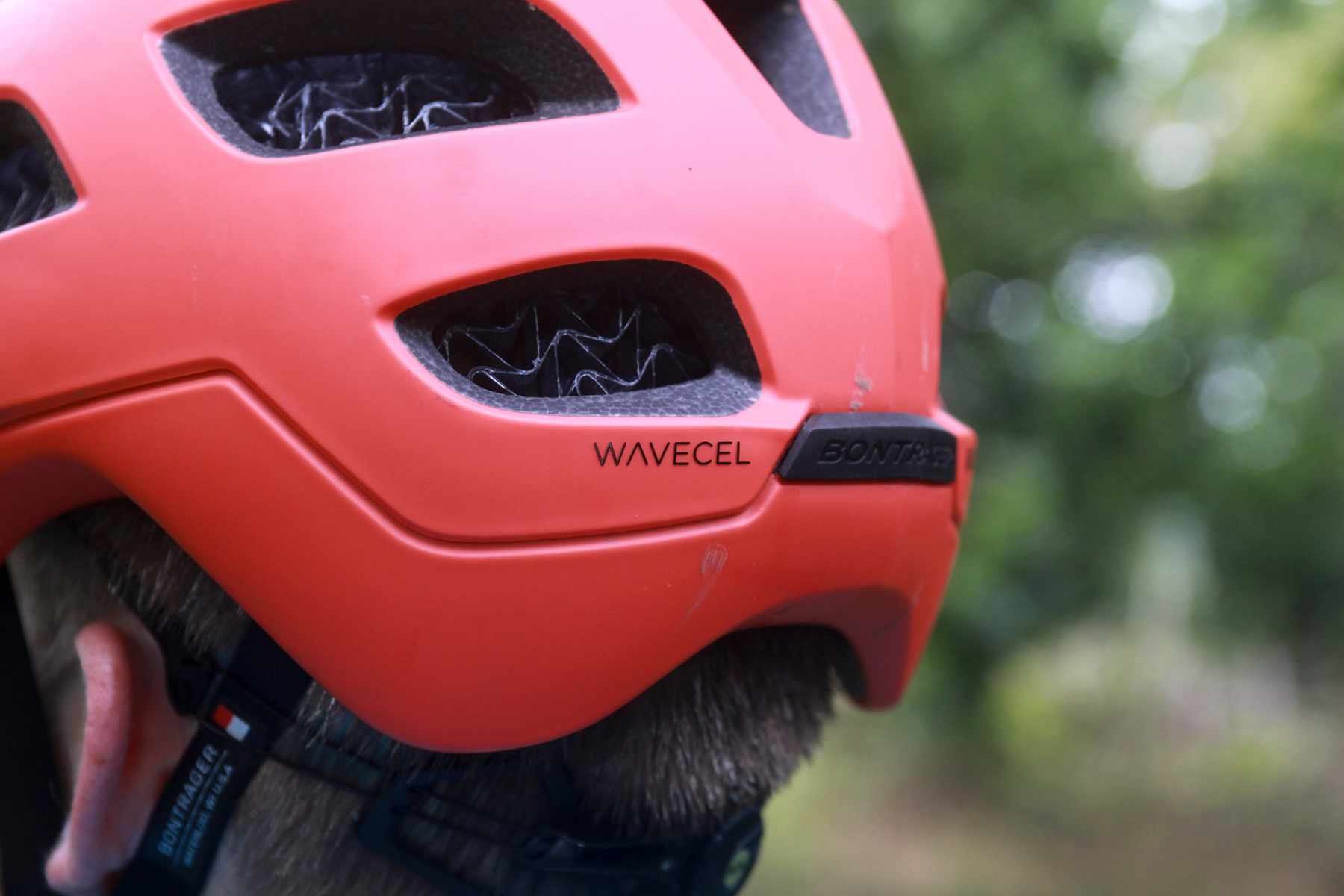
So helmet manufacturers are starting to come up with some innovative new technologies to enhance the protection that a standard mountain bike helmet can offer. These typically take the form of a separate liner to the helmet shell, which is designed to allow a slight amount of movement in a rotational impact, reducing the force transmitted to your brain. The most prevalent liner system out there at the moment is probably MIPS, which doesn’t make helmets itself, but licences its technology out to a number of manufacturers, including Giro, Bell, Specialized, Smith, Troy Lee, and Bontrager for that matter..
Riding a Wave
Bontrager’s Blaze is the company’s first off-road helmet to integrate its new WaveCel impact absorption technology, which was launched earlier this year as an alternative to MIPS. It’s exclusive to its own helmets, and they claim that due to the multiple ways it can deform, the WaveCel liner not only reduces the force of rotational impacts, but also linear ones. In fact they’re confident enough to assert that you’re 48 times less likely to suffer a minor brain injury if you’re wearing a WaveCel helmet, as opposed to a conventional EPS lid.

Bontrager also states that WaveCel reduces the risk of a concussion more effectively than a MIPS liner . This claim has triggered a response from MIPS stating that it was unable to replicate these results in their own tests. As yet there’s no recognised standard for testing helmets during rotational impacts, so the debate may rumble on for a while. I’m going to add my own (entirely anecdotal) observations later in this review.

The Blaze is aimed squarely at trail and enduro riders. As such, it’s all about maximising protection and coverage rather than being unnoticeable on your head. Aesthetically it’s quite understated, compared to the graphics-heavy motocross-inspired lids out there, but it does come in four colours. Slightly disappointingly, my “Roarange” test lid doesn’t match up to the bright orange photos on Bontrager’s website, and is more of an Embarrassed Salmon in real life.
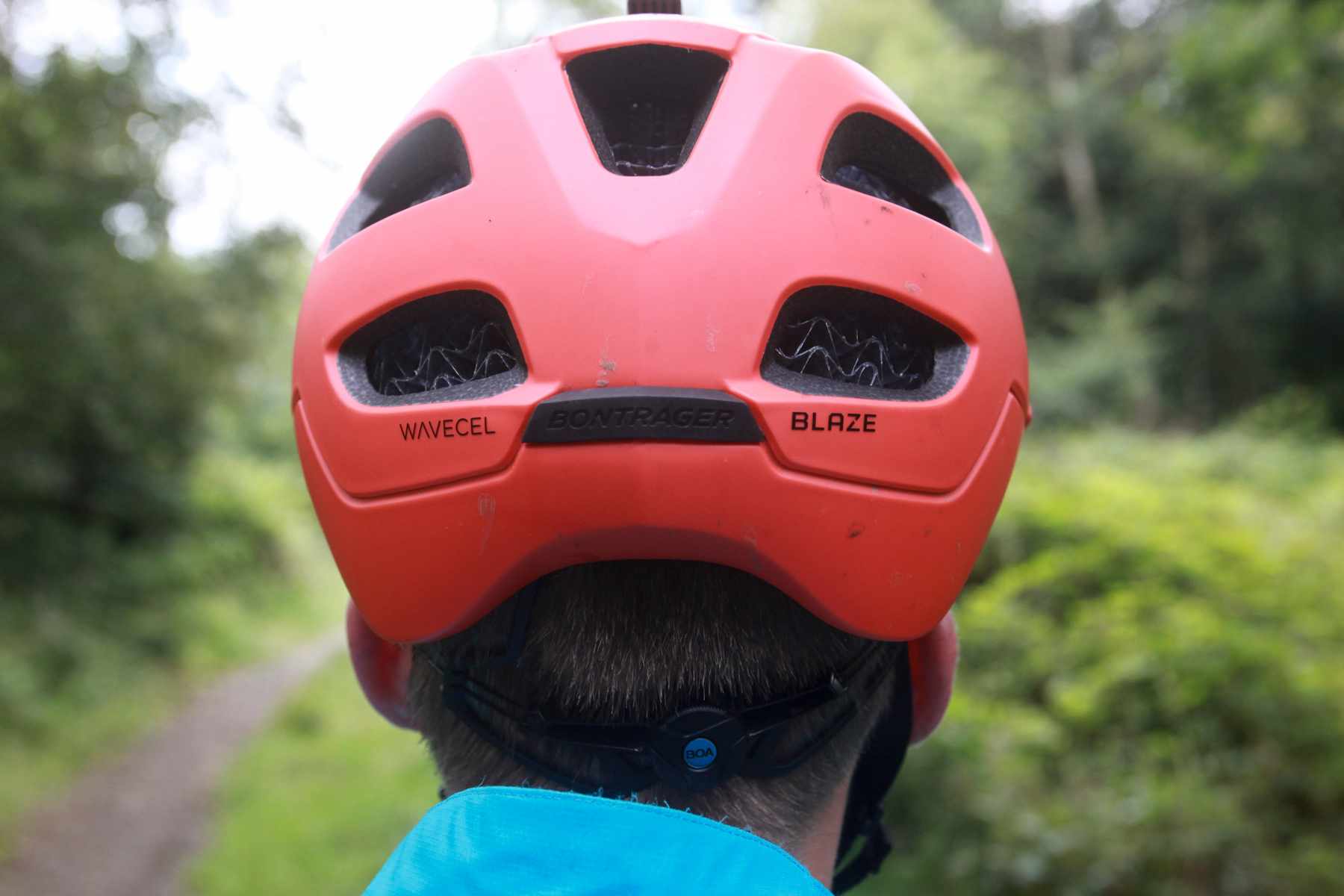
Fit and adjustability
Possessing a head of 58cm circumference, I just sneaked inside the range for a large size Blaze. Nevertheless I didn’t feel like I was rattling around inside it. This is thanks in part to the BOA fastening cradle, which drops down nice and low at the back of your head to give a really secure fit. The simple ratchet dial is easy to adjust, as is the chin strap, and the whole thing is kept on by a Fidlock sliding magnetic buckle.

The smooth shell features 15 vents, including one on the top which is designed to accept Bontrager’s Blendr mount, supplied with the helmet. The mount takes an action camera or one of Bontrager’s helmet lights, and is designed to detach if you catch it on a low branch or a pub doorway, without damaging the helmet or your neck.

The Blaze does have a conventional EPS shell, but this is thinner than usual, to accommodate the WaveCel liner. The WaveCel forms a continuous layer of open-ended corrugated material, just over 1cm thick, over the top, sides and back of your head. It’s made of sturdy plastic strips, and is flexible enough to deform slightly when you put the helmet on, but stiff enough not to be accidentally damaged. I’ve heard of riders accidentally writing off MIPS helmets by breaking the liner attachment points – there’s no chance of that here.

The WaveCel layer adds a bit of bulk to the lid, giving the larger sizes a slightly mushroomy profile. The liner also lacks vent cutouts, meaning that if you normally use a helmet light with a mount that fixes through the shell, you won’t be able to with the Blaze. But that’s what the Blendr mount is for.
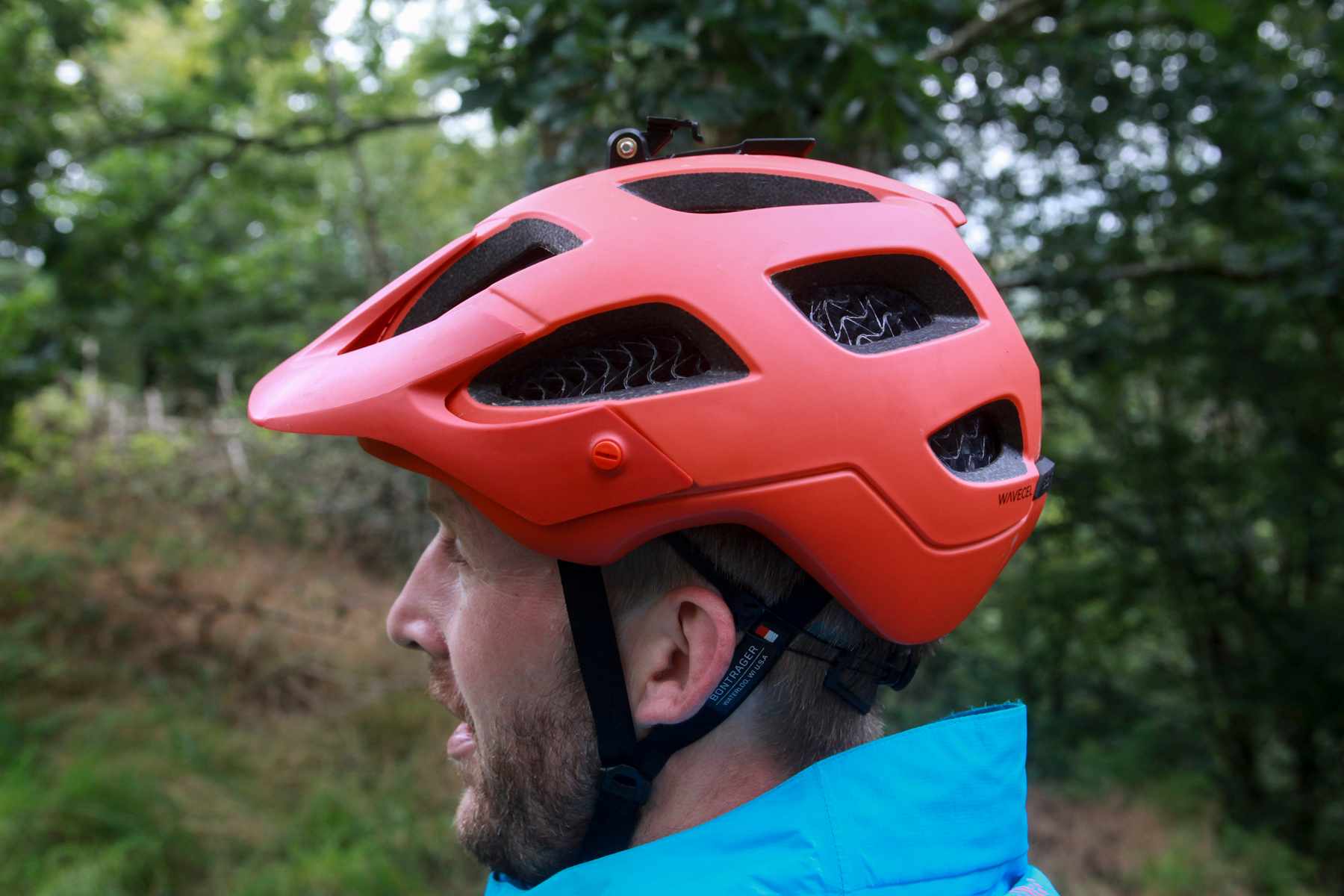
The inside of the helmet features one large pad, which can be removed for washing by popping the cradle arms out of the external shell. You get a spare in the box, too. The stubby peak is held on with two nylon breakaway bolts, and can be pushed up just far enough to accommodate a set of goggles underneath it. While the back of the helmet doesn’t have a goggle clip, it’s got an angled profile that will hold a strap in place fairly securely.

The finish of our test helmet was a bit rough and ready in places. In particular there’s a thin plastic layer over the inner polystyrene which started to peel away after just a few weeks, giving it a slightly shabby feel. Externally it still looks as good as new, though.

The rest of this feature is visible only to registered members
On the trail
Claimed weight for a large Blaze is 448g, but mine tipped the scales at 480g. This is nearly half as much again as some helmets, and definitely on the weighty side for an open face, even one with extra coverage. I also found the BOA dial sometimes created a bit of a hotspot where it sat over my occipital bone. It was comfortable enough, and there was no trace of the wobbly feeling that some MIPS helmet users complain about, but I’ve definitely worn lids that are less noticeable in use.

While it doesn’t have the wind tunnel effect of some helmets with big vents, the open-ended structure of the WaveCel liner means plenty of air gets through to your head. The helmet also comes with an extra “NoSweat” pad with a silicone brow insert, should you find the thinner pads dont seems to absorb sweat effectively.
Normally in helmet reviews there’s a bit where the tester says something along the lines of “Of course, we couldn’t actually crash test it, but if we did…” In this case, I’m pleased to report that thanks to a front wheel wash-out on a trail covered with an inch of crispy leaves, I did get to try out the Blaze’s protective capabilities.

I was going at 15 mph or so when it happened, and didn’t even manage to get a hand off the bars, so my head hit the ground pretty hard. I was able to get up, dust myself off and finish riding. However I also had some visual disturbances immediately after the crash, and a dull headache that persisted well into the next day, both of which are recognised symptoms of concussion.
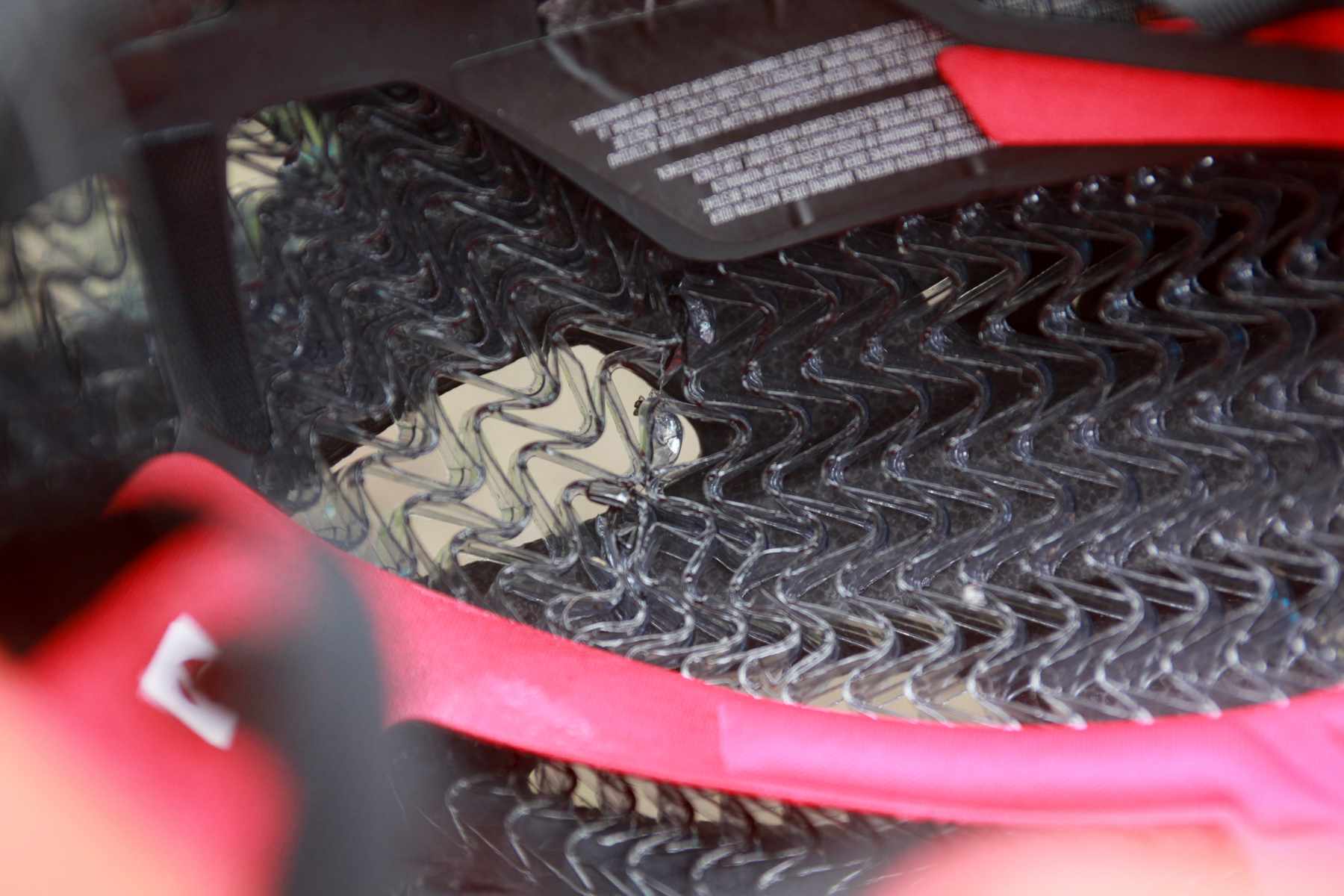
Slightly perplexingly, the helmet shows very little visible sign of damage. I did think that the liner had been damaged after pulling back the pads to find a squashed, bunched-up section of Wavecel, but it turns out that there’s an identical one on the other side, apparently due to the way the Wavecel is fitted to the helmet. So it’s entirely possible that I didn’t crash as hard as I thought, but I still hit the ground with sufficient force to experience some after-effects. I realise that in the real world, all crashes are different, there’s a very limited amount you can infer from a single incident, and that I might well have come off worse in a different lid. But Bontrager’s claims of a 1% chance of mild brain injury in a 14 mph impact suddenly sound a bit more far-fetched.
Overall
Bontrager has tried something different with the Blaze, and for that they deserve a bit of respect. All their helmets also come with a 1-year crash replacement policy, and spares, pads and cradles are all available at reasonable prices. However the Blaze is definitely on the weighty and bulky side, and in use it doesn’t feel like a particularly top-end helmet.
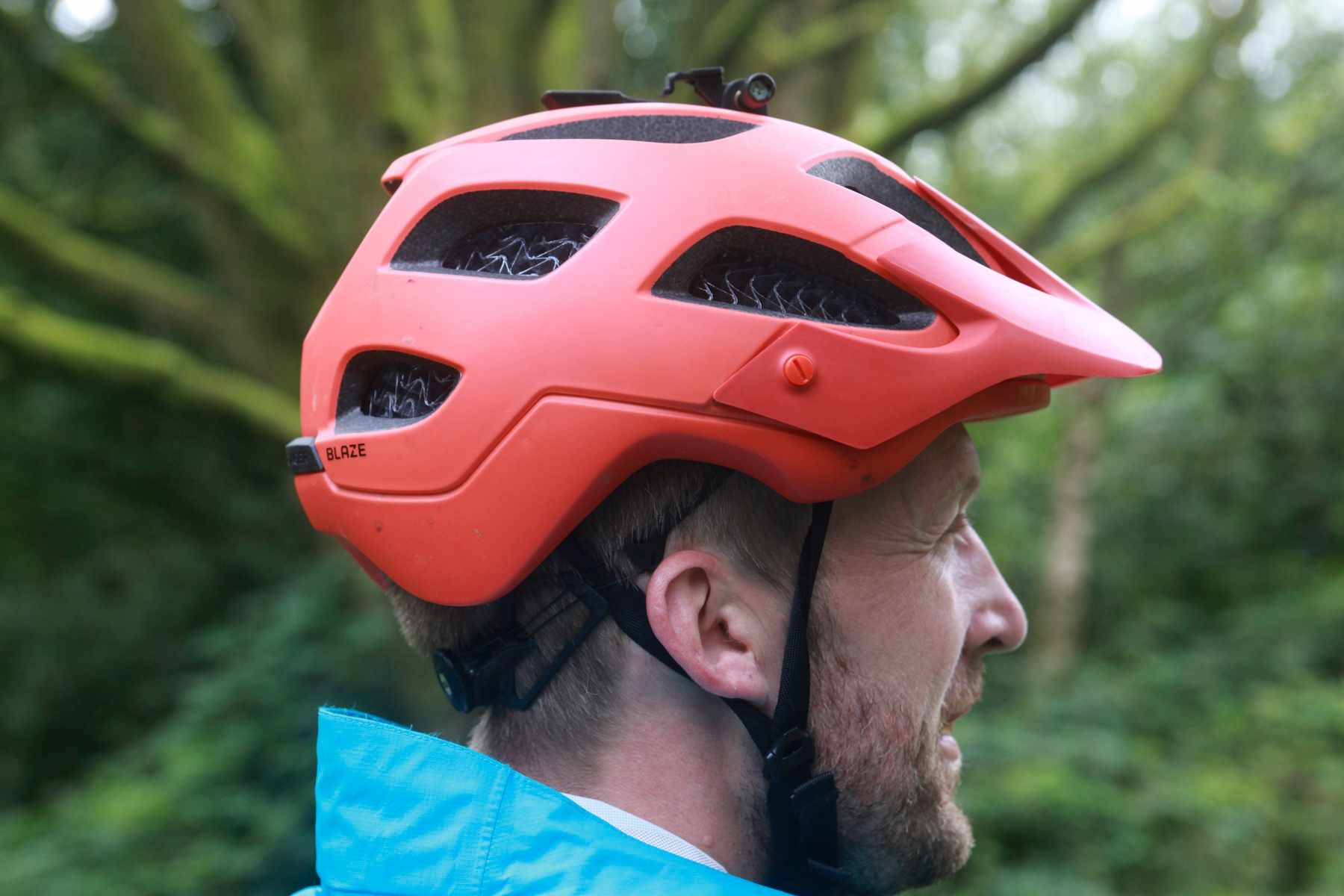
There’s also no getting away from the fact that you pay a premium for the WaveCel technology, with the Blaze ringing the till at a kingly £200. That’s not outlandish for a helmet these days, but the ones around that price point tend to be the ultra-lightweight road models that the Tour de France pros are wearing. If you’re looking for a decent trail helmet with rotational impact protection, you can pick one up for half that price. Bontrager’s own Rally for example retails at £99, has very similar styling to the Blaze, features the same clever light and camera mount, and was favourably reviewed by Wil at the end of last year.
With any new technology there are additional development and production costs. Bontrager also admits there is a weight penalty with the WaveCel system, so you’ll just have to decide whether it’s worth the potential extra protective benefits. Based on my personal experience, I’d like to see more evidence for the effectiveness of WaveCel before I’m convinced it’s worth the extra weight and price.
Review Info
| Brand: | Bontrager |
| Product: | Blaze WaveCel |
| From: | https://www.trekbikes.com/gb/en_GB/bontrager/ |
| Price: | £199.99 |
| Tested: | by Antony for Three months |
Comments (3)
Comments Closed

Like my Endura mt500 it will be so much hotter than a ‘normal’ helmet. Anything over 14C and I have to use my Endura Singletrack or I overheat terribly. I know some people run cooler than I do but it’s madness to think these types of helmet are anywhere near as cool as others.
Interesting. Nice review.
I think a lot if injuries are relatively subjective. I’ve knocked myself out with very little damage to a lid and clearly wrote a lid off after a simple spill. I’ve also suffered symptoms after coming off in a mt500 lid with the kroyd which similar to you had no signs of a spill at all.
I think without a baseline (no matter how low) were buying blind. It’s even more concerning that they are putting poorly finished lids (even if it is cosmetic only) onto the market full stop
after sending my info into Trek to get a crash replacement and Surviving a pretty good crash at 17mph into an over the bars on sharp granite, I can attest to the helmet’s crash worthiness. As for any brain damage… who knows ;) The helmet does run a tiny bit hot, but not really that bad. I ride in Southern California where 38/39C is not uncommon during late spring, and summer. Definitely warmer than my Giro Fixture and a tad warmer than my Bolle “The One” and especially warmer than the Lazer Impala that I recently used, but really not that bad. Once you flip the visor up to its highest position, it seems to redirect air through the helmet much better than in its lowest position (Which peaks under the brim of the helmet and does impair line of sight). I keep it in the high position most of the time for this reason :) Great review. The riding conditions are different from mine, so it’s good to know what it’s like in cooler weather!